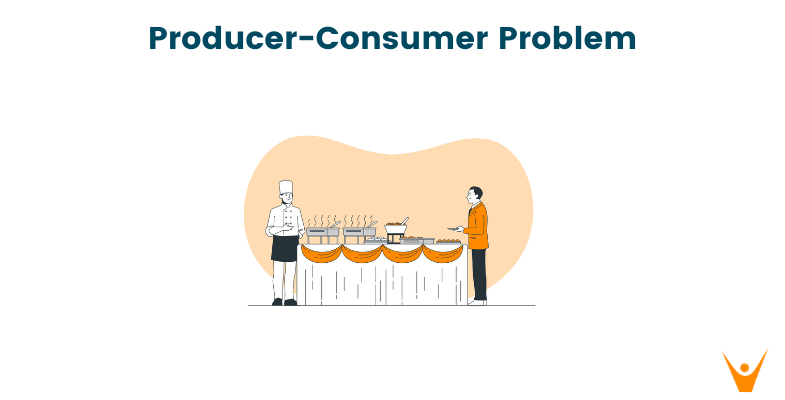The producer-consumer problem is a classical synchronization problem in computer science that you must learn because it can be asked in your next technical interview. In this article, we will explore everything about the Producer-Consumer problem and some possible solutions.
What is the Producer-Consumer Problem?
As the same suggests, this problem involves two types of processes: producers and consumers. However, to ensure proper execution and avoid issues such as race conditions or resource overutilization, synchronization mechanisms are required.
The producer-consumer problem arises when multiple threads or processes attempt to share a common buffer or data structure. Producers produce items and place them in the buffer, while consumers retrieve items from the buffer and process them.
The challenge lies in coordinating the producers and consumers efficiently to avoid problems like data inconsistency. This buffer is known as the critical section. So we need a synchronization method so that when the producer is producing the data, the consumer shouldn't interfere in between or vice versa.
The other challenge that can arise is the producer should not insert data when the buffer is full i.e., buffer overflow condition. Similarly, the consumer must not remove data when the buffer is empty i.e., buffer underflow. As we have been given limited slots buffer where we need to synchronize, it is also known as the bounded buffer problem.
We use both types of semaphores i.e., binary semaphore and counting semaphore to get to the solution. So, we take mutex as m. A mutex is a binary semaphore used to acquire the lock on the buffer.
Next, we choose an empty semaphore which is a counting semaphore whose initial value is n. It is used to track empty slots. We take full as another counting semaphore that tracks filled slots. Its initial value would be 0 at time = 0.
Example in Real World
An example of the producer-consumer problem in real life can be found in a restaurant scenario, particularly in the context of order processing:
- Producers: In this case, the producers are the restaurant's kitchen staff. They are responsible for preparing dishes (items) that customers have ordered.
- Shared Buffer: The shared buffer is represented by the restaurant's order queue or order ticket system. When a customer places an order, it is added to this queue.
- Consumers: The consumers are the restaurant's waitstaff or servers. They retrieve orders from the queue and deliver them to the respective tables.
Solution Approach
Here is the step-by-step approach to solving the producer-consumer problem:
- The mutex here will help us to create mutually exclusive relations between producer and consumer.
- Whenever the consumer tries to retrieve data when the buffer is empty, due to the full semaphore, it will go to the waiting stage as it will not be able to decrease its value.
- Then, the Producer Thread will check if the slots are empty, it will call the wait() function and the value of empty will decrease by 1.
- The producer will reach the critical section. So initially we are assuring that the producer will be accessing the slots only.
- After it increases the value of the full semaphore by calling the signal() function.
- Due to this, the consumer will get unlocked from the waiting stage and will be able to access the slots.
- If the slots get filled, the empty semaphore becomes 0, and hence producer will go to the waiting stage.
Practical Implementation
Here is the pseudocode to implement the producer-consumer problem:
//PRODUCER do{ // wait until empty is greater than 0 and empty becomes empty-- wait(empty); wait(mutex); //critical section, i.e., adding data to the buffer signal(mutex); //increment full semaphore value. signal(full); }while(1); //CONSUMER do{ // wait until full is greater than 0 and full becomes full-- wait(full); wait(mutex); //critical section, i.e., retrieve data from the buffer signal(mutex); //increment empty semaphore value. signal(empty); }while(1);
Is the Producer-Consumer Problem Deadlock?
The producer-consumer problem itself is not a deadlock, but it can lead to deadlock if not properly handled.
You need to implement a careful design and the use of synchronization techniques such as condition variables and timeouts are necessary to ensure that producers and consumers can work together without causing circular dependencies or resource contention.
Conclusion
The producer-consumer problem is a fundamental concept in concurrent programming and is often used to illustrate the challenges of managing shared resources in a multi-threaded or multi-process environment.








